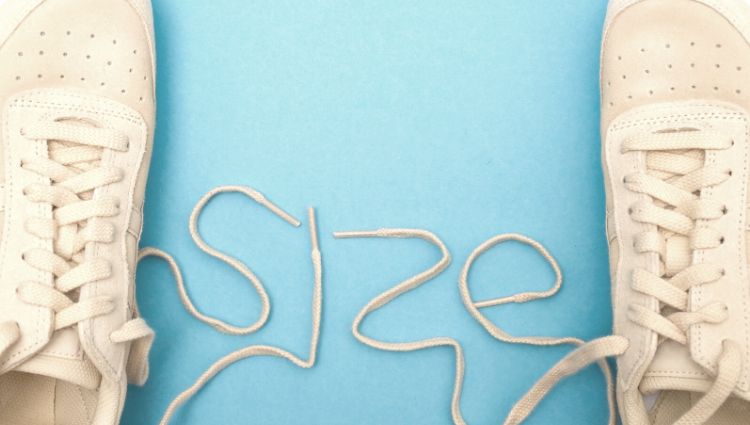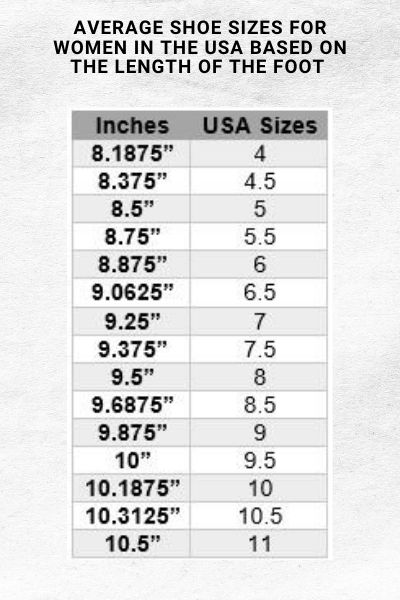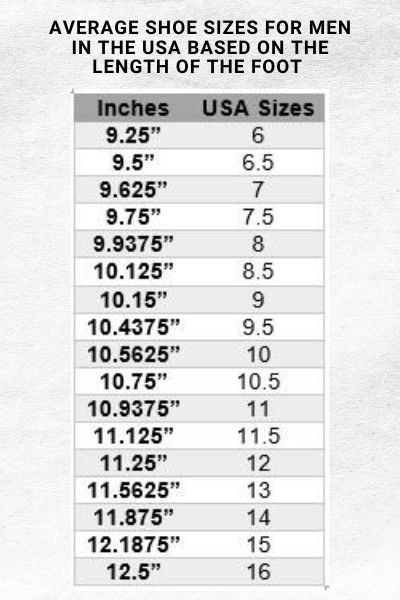Page Content
Shoe Size By Length of Foot
Whether you’re a shopaholic with a penchant for designer heels, or just someone who likes to invest in a new set of comfortable footwear every now and then, there’s no denying that one major indicator of a great pair of shoes is how well they fit on your feet. Ill-fitting shoes are the number one cause behind many common foot conditions and deformities, so though this might seem like something to shrug off in the name of fashion, remember that it’s always best to prioritize your comfort and health over everything else. You might be tempted to snag the last pair of those limited edition stilettos, but if they’re a size too big or too small, or too narrow, you run the risk of hurting your poor feet and not making the most out of your buy!
In this article, we’ve rounded up all you’ll need to know when it comes to how to measure your feet for shoe size, how to buy shoes when your feet are different sizes, and more. A good pair of shoes will only last as long as how well they fit you, so if you want to make your purchases worth your while and avoid a trip to the podiatrist for ingrown toenails and bunions, keep these tips in mind next time you’re scrolling through the summer collection of an online shop or browsing the selection at your local department store.
How Do You Measure Your Own Feet?
Measuring your feet is a general way of gauging how well your shoes will fit in the long run. With the influx of imported products from across the globe, it’s not only best to know your general foot size, but it’s just as useful to be aware of the exact measurements of your feet so you can utilize them in order to determine what shoe size to get in a pinch.
Measuring your own feet is easy!
All you’ll need is a pencil, a piece of paper that’s big enough to rest your entire foot on, and a tape measure. You’ll want to measure both the length and the width of your foot to determine your exact foot size.
- To start, place your foot gently on the surface of the sheet while in a seated position.
- Carefully trace around your foot with a light stroke, sticking to the perimeter of the foot without angling the pencil directly to the side of your sole. There’s no need to draw the shape of each individual toe, since what’s more important is that you outline along the point of the longest toe.
- Use the tape measure to take note of the distance from the very bottom of your foot to the tip of the longest toe. In order to ensure accuracy, subtract around 0.20 to 0.25 inches from the final value. This is the length of your foot.
- To get the width, simply wrap the tape measure under the sole and around the widest part of your foot. Jot down the number where one end of the tape meets the other. It’s always best to measure both feet and choose the bigger measurement as foot sizes may vary.
Foot Measuring Tips:
- It’s best to measure your feet at night when they’re at their biggest, since feet have a tendency to swell after a full day of walking.
- If you’re planning to buy a pair of shoes that you’ll be wearing socks or stockings with, have them on while you measure your feet in order to ensure that the size you get will be able to accommodate the extra space.
- Measure your feet for shoe size at least once a year to determine if there have been any changes.
- Feet grow bigger during pregnancy, so if you’re currently expecting, it’s important that you wear the right shoes to support your changing body. Be sure to constantly measure your feet as the months go on to account for the differences in your foot size.
For those who have gotten their feet measured at a professional shoemaker’s or department store, these places often make use of the Brannock Device, a customary foot measuring tool that scales a ruler along the foot to measure the length, width, and arch, which is a must especially when having custom shoes produced.
Average Shoe Size
Feet are the foundation for balance and stability in the body, and as a result, a person’s height is usually directly proportional to their shoe size. Taller people tend to have larger feet since they need a wider base in which to balance their weight, while shorter people have smaller feet.
While there are no official statistics in place, various online forums and surveys have dictated that the average shoe size for women in the United States falls in between 8.5 and 9. Women who stand at around 5” to 5’3” report shoe sizes of 5 to 8.5, those who are 5’4” to 5’7” mostly purchase shoes in sizes 6.5 to 10, and women who are taller than 5’8” wear sizes 9 and up. Of course, the average shoe sizes also vary depending on the country. In countries like China and Japan, for example, countries that have historically held the belief that smaller feet are the ideal, most women report sizes of 5.5 to 6. In Europe and Australia, the average foot size for women is 7 to 8.
For men in the United States, the average male shoe size is 10.5, with the worldwide average falling between 9 and 12.
What to Do When Your Feet Are Different Sizes
If you’ve noticed that one foot is slightly larger than the other, there’s no need to panic. This is an extremely common occurrence. In fact, around 60% of the global population has reported a discrepancy in their foot sizes. When it comes to buying shoes for different sized feet, the rule of thumb is always to choose the size of the bigger foot. This goes especially for people with a foot half a size larger or less than the other one. To make your shoes fit properly, invest in a sole insert or padded cushion to place at the bottom of the shoe. This will help add volume in the shoe with the smaller foot.
However, you should always do things at your own discretion. If your feet are severely mismatched, with one foot being several sizes longer than the other, you might need to purchase a pair of mixed size shoes lest you compromise the health of your feet. Talk to your local shoe retailer if they do custom orders in their stores. Remember, it’s better to wear a shoe that is too loose rather than too tight.
USA Foot Sizes
In the USA, the average shoe sizes for men based on the length of the foot is as follows:
It’s important to remember that your feet change as you age, and your shoe size and width will also. Knowing how to measure your feet for shoe size will come in handy, particularly when purchasing items online without being able to try them on. Don’t forget to take into account what you’ll be wearing with the shoes themselves, from dress shoes to athletic footwear, to ensure that you keep your feet in excellent shape in the years to come.



